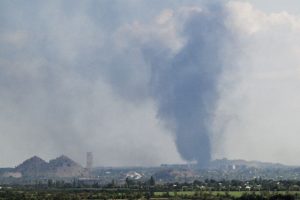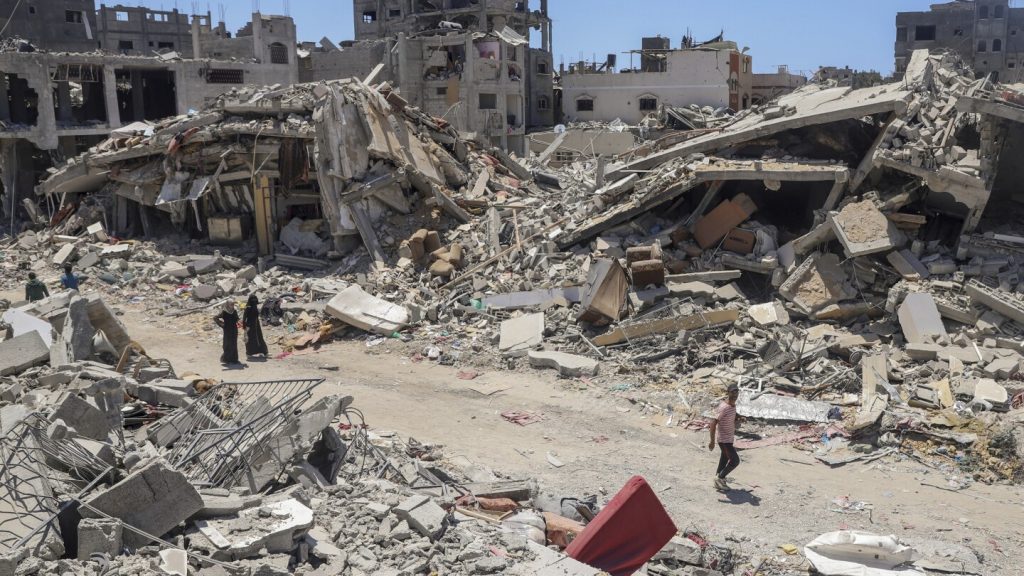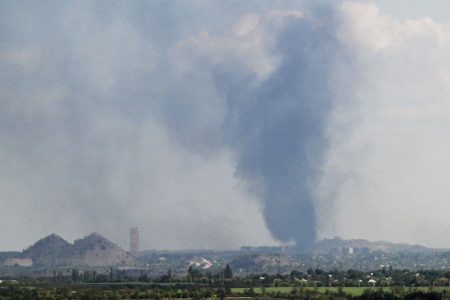More than a year into the ongoing war in the Middle East, Israeli troops are still engaged in battles with Hamas in the northern part of the heavily destroyed and isolated Gaza Strip. Hamas militants are carrying out hit-and-run attacks from bombed-out buildings, and Israeli forces have reportedly raided shelters for displaced residents. Despite heavy losses, including the killing of a top leader, Yahya Sinwar, Hamas remains the dominant power in Gaza. The conflict has drawn in militants from various countries in the Middle East, with Iran inching closer to all-out war with Israel.
Israel has once again ordered mass evacuations in northern Gaza, severely restricting aid and raiding hospitals that it claims are used by militants. Two Israeli strikes in the border town of Beit Lahiya resulted in the deaths of at least 88 Palestinians, including women and children. The military claimed that its target was a spotter on the roof. The conflict continues to escalate, with Israel resorting to more draconian measures, including passing legislation to restrict aid providers in Gaza. The United States and other allies have protested against these actions, accusing Israel of allowing itself to be infiltrated by Hamas.
Israel launched its latest offensive in northern Gaza in early October, focusing on the Jabaliya refugee camp where Hamas had regrouped. The offensive resulted in numerous civilian casualties, with over 43,000 Palestinians killed according to Gaza health authorities. Israel claims to have killed over 17,000 fighters but has not provided evidence. Despite repeated offensives, Israeli forces continue to face renewed attacks from Hamas militants. The war seems to be stuck in a devastating loop of violence, with no clear end in sight.
As the war continues, Israel is considering two options to break the cycle: completely reoccupy Gaza or secure a cease-fire with Hamas that involves the release of hostages in exchange for Palestinians in Israeli jails and a full Israeli withdrawal. The ongoing conflict has left many residents stranded in their homes, with limited access to food, water, and medical supplies. The U.N. has warned of a humanitarian crisis in Gaza’s northernmost governate due to the destruction caused by the fighting.
Residents who remain in the northern areas of Gaza describe being stuck in their homes for days at a time due to the fighting, with bodies left in the streets and rescue teams unable to access the area. Evacuations ordered by the Israeli military have forced many families to flee their homes, with reports of men being taken away in trucks and women and children forced to walk to a nearby hospital. The lack of aid entering Gaza has raised concerns about a potential humanitarian crisis, with the U.S. warning Israel to increase aid deliveries to the region.
Palestinians fear that Israel may be implementing a strategy to empty the northern areas of Gaza, forcing civilians to leave and branding those who remain as militants. Rights groups have expressed concern about the legality of such a plan under international law. Despite U.S. Secretary of State Antony Blinken’s reassurances that Israel has not adopted this plan, concerns persist about the humanitarian situation in Gaza. The ongoing conflict between Israeli forces and Hamas shows no signs of abating, with both sides continuing to engage in deadly confrontations.














